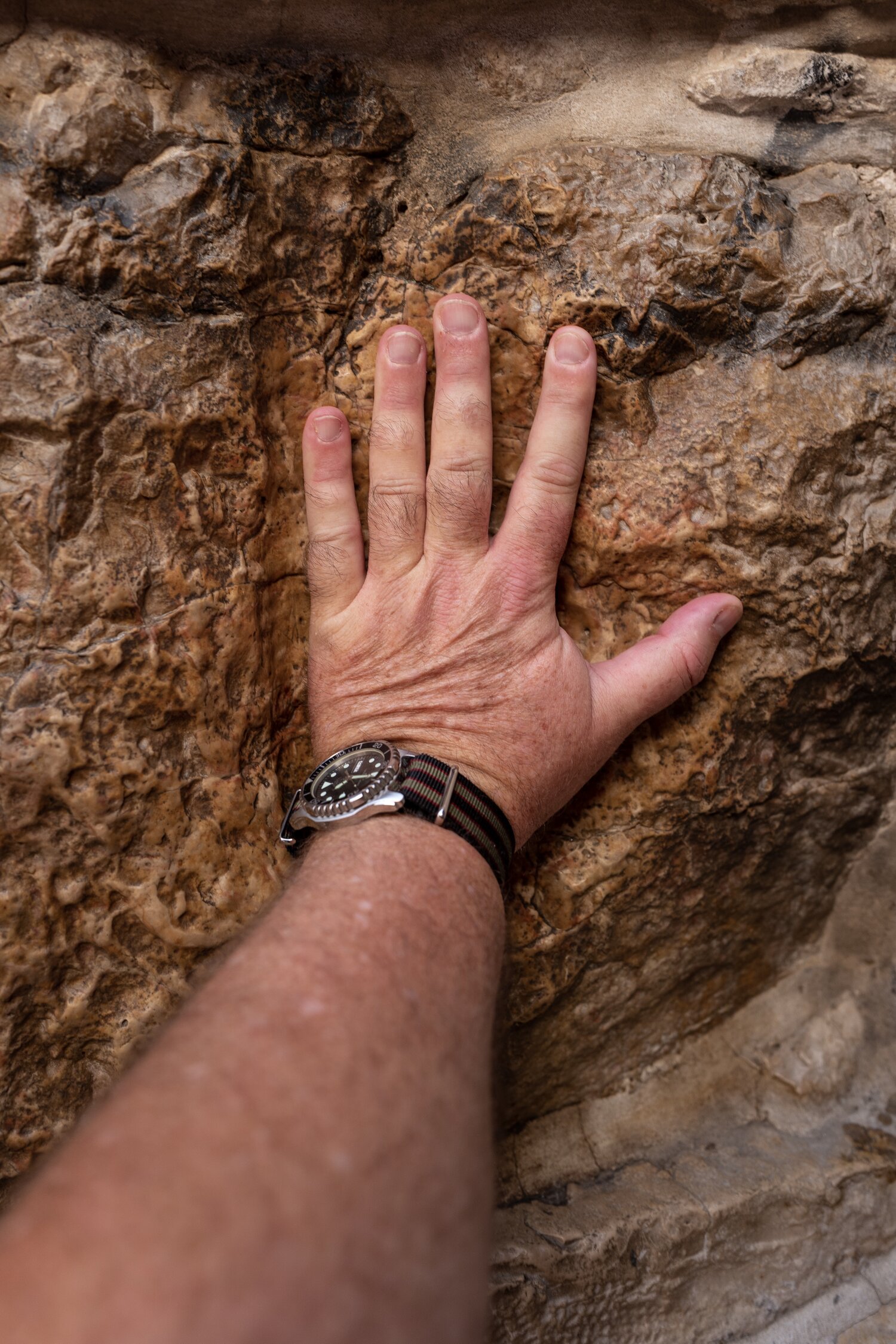A Luminous Pilgrimage: My Visit to Mathieu Lustrerie in Gargas, France.
Suppose you’ve never experienced the absolute pleasure of an invitation to a dinner party in the south of France. An evening where the wine is as abundant as the conversation is obscure. In that case, you’ve missed a rare treat. It’s the sort of event where you learn, perhaps for the first time, that French people or people who have moved here from far and wide to be French really do talk about food, wine, and even chandeliers with equal and almost religious fervor. And that’s precisely how I came to find myself on an unexpected pilgrimage to Mathieu Lustrerie, an absurdly fascinating chandelier atelier in Gargas, a picturesque village tucked away in the Luberon region of Provence.
Let me explain. About a week ago, during one of those fabulous soirées that only Australians can host so well and lucky local Brits, French, and even the odd boring Canadian are over the moon to attend. Such a delightful and memorable evening. I found myself in the company of many wonderful new friends who, between mouthfuls of perfectly barbecued chicken, pork and sips of a genuinely excellent local wine (provided mainly by our wonderful friends at the village Magasin du Vin), waxed lyrical about their recent visit to this chandelier wonderland.
These weren’t the sort of people to get misty-eyed over home decor. Still, there they were, eyes sparkling as much as the champagne that was earlier opened by a saber (or bread knife, it doesn’t matter), describing chandeliers with a sort of reverence generally reserved for aged cheeses or archaeological digs.
Then someone dropped the bombshell: Mathieu Lustrerie was restoring the chandeliers damaged in the fire at Notre Dame Cathedral. Yes, *that* Notre Dame. The one in Paris. The one that almost became a metaphor for human civilization going up in flames. Well, after hearing that, how could I not go? Maybe the tour guide might even have a hunchback?
My journey to Gargas began with the usual amount of optimism that comes from an incomplete understanding of French road signs and the perils of rural navigation. I’ve driven in France quite a bit now, and I’m no stranger to their fondness for signposts that offer ambiguous directions or none at all. After a couple of wrong turns (one of which led me down a rather picturesque, if completely irrelevant, vineyard trail), I finally found myself in Gargas. Gargas, for those unfamiliar, is a quintessential Provençal village, all sun-dappled stone and lavender-lined lanes. It’s the sort of place where you could easily spend a pleasant morning doing absolutely nothing. But I had a mission. And that mission led me to the doorstep of Mathieu Lustrerie.
From the outside, Mathieu Lustrerie doesn’t scream for attention. In fact, it barely whispers. A modest set of buildings—ochre-covered stone, of course, because this is Provence. There’s a certain understated elegance to it, a charm that doesn’t feel the need to announce itself with grandiose fanfare. But don’t be fooled by the humble exterior; what lies inside is a veritable treasure trove of lighting artistry.
Upon entering, I was immediately struck by the stillness of the place. Not just the absence of people—there wasn’t another soul in sight—but the kind of deep, resonant silence that you find only in places of great significance. It was as if the very air had decided to hold its breath out of respect for the glittering masterpieces that adorned every conceivable surface.
I wandered through the atelier, marveling at the chandeliers in various states of assembly and restoration. There was a piece that looked like it belonged in a Russian palace, dripping with crystal drops the size of quail eggs. There, another that could have illuminated the ballroom of Versailles, all gold and intricate scrollwork. Each chandelier was a testament to craftsmanship so detailed and delicate that it seemed almost otherworldly.
Quiet Reverie Interrupted. In this awestruck silence, I would have happily remained for the entirety of my visit had it not been for the arrival of a man who clearly had other plans for my peaceful afternoon.
He appeared suddenly, as if conjured from the ether, wielding a camera phone and a retched “selfie stick” with the aggressive enthusiasm of a tourist determined to capture every last ounce of culture in a single visit. As they say, he was a one-man symphony, and his instrument was the extremely annoying click of his camera phone shutter, accompanied by a running commentary delivered entirely to himself.
“Ici... c’est magnifique! Oh, regardez ça... incroyable, incroyable!”
He darted from chandelier to chandelier, snapping photos at odd angles and muttering his soliloquies. I watched in horrified fascination as he proceeded to document the atelier in a manner that would make even the most patient museum curator consider homicide. And trust me when I say that (I know). If I had considered this man’s unfortunate arrival beforehand, I could have assuredly made an effort to turn off my cell phone upon leaving the house. This action is imperative if you want to stay under the radar. One of my former colleagues used to repeat this mantra regularly in our office. “No video, no audio, no cell phone tracking, no likelihood of conviction (that is actually the PG version). With just a little preparation upfront, I would have never been suspected of dumping his annoying carcass in the Provençal hinterland weeks later by a clearly underworked but very frustrated Inspector Clouseau. Top tip!
There’s a particular breed of traveler who, when faced with something sublime, feels compelled to capture it from every conceivable angle. This man was the poster child for that breed. Despite my efforts to glare him into oblivion, he remained oblivious, content to photograph and narrate to his heart’s content. Just when I began to consider more drastic measures—such as sneezing very loudly in his general direction—he abruptly gathered up his camera, offered a final whispered “c’est magnifique,” and strode out into the noonday sun, leaving me alone once again with the chandeliers and silence.
With the interruption behind me, I could return to the real reason I was there: the chandeliers. And let me tell you, they were worth every wrong turn, every misread sign, and even the impromptu concert by the self-talking photographer. Mathieu Lustrerie is not just a place where chandeliers are made or restored; it’s a place where they are *born*—crafted with such care and attention to detail that they seem to transcend their function as mere light fixtures and become something far more significant. Each chandelier is a story, a piece of history, a work of art.
There was a chandelier in the main hall that immediately caught my eye. It was massive—an opulent, glittering leviathan that looked as if it could light up a small city on its own. Its arms were adorned with crystal drops that shimmered in the light, each catching and refracting the sun in a way that turned the entire room into a kaleidoscope. I stood beneath it, trying to fathom the sheer scale of the thing, wondering how on earth anyone could design something so simultaneously grand and intricate. In another room, I found a chandelier that was undergoing restoration. Its frame, an elaborate swirl of gold leaf and delicate filigree, was laid bare, its crystals removed and carefully placed on a nearby table. The artisans at Mathieu Lustrerie were in the process of reassembling it, piece by piece, with the kind of precision that you might expect from a neurosurgeon. The chandelier was a beautiful mess—a reminder that even the most dazzling creations sometimes need a bit of TLC to shine their brightest.
Then there was the Notre Dame project. I had to see it. Guided by nothing more than a “hunch” and a well-placed sign, I found the room where the damaged chandeliers from Notre Dame were being painstakingly restored. There they were, stripped of their former glory yet still exuding a quiet dignity. These chandeliers had seen centuries of history, had illuminated the prayers and hopes of countless worshippers, and had survived a fire that threatened to destroy one of the world’s most beloved landmarks. And here they were, in this quiet atelier in Gargas, being brought back to life by the skilled hands of artisans who clearly understood the significance of their task.
Eventually, I had to leave Mathieu Lustrerie, though I did so with considerable reluctance. There’s something undeniably magical about the place, something that stays with you long after you’ve left. It’s not just the chandeliers themselves, though they are indeed the stars of the show. It’s the sense that you’ve been in the presence of something truly extraordinary, a place where art, history, and light come together in a way that defies easy explanation.
As I returned to my car, I took one last look at the ochre-colored, unassuming buildings that housed this extraordinary atelier. How many people, I wondered, drive past this place without even knowing it’s there? How many miss out on the chance to see something so unique and so beautiful? And then I thought of my friends at that dinner party who had urged me to visit Mathieu Lustrerie. They had indeed understated the case. This place wasn’t just worth a visit; it was worth getting lost on the way, enduring the company of an over-enthusiastic man with a monologue, and worth every second spent in awe of the incredible artistry on display.
So, if you ever find yourself in the Luberon with a free afternoon and a desire to see something truly spectacular, take a detour to Gargas. But be warned: you may never look at a chandelier the same way again. And that’s a good thing. If you are interested in a source of beautiful images and videos from Provence, I would direct you to our lovely Aussie friend & dinner party host mentioned above. Go to Robbyn’s Instagram @perfectly_provence_ Follow Robbyn’s page for stunning content from the South of France.
I hope you enjoy today’s post and accompanying images. As always, I would like to hear from you in the comments if you have a moment. Until next time, I wish you a great day, and as always, live well!
M.
P.S. All the images captured for this post were taken with the Leica Q3.






























